1. Smoking Everywhere

Back in the ’50s and ’60s, people smoked pretty much everywhere, even in hospitals, airplanes, and offices. Visitors might light up bedside with their loved ones, nurses would puff away behind desks, and patients could even buy a pack from a trolley rolling through the ward. It wasn’t unusual to be offered a cigar upon boarding a flight. This was normal until the 1970s and didn’t disappear completely until around 2000 in the U.S. It took decades of reports and advocacy to shift attitudes, but that haze of tobacco left a lasting impression on public health standards.
2. Doctors Selling Them
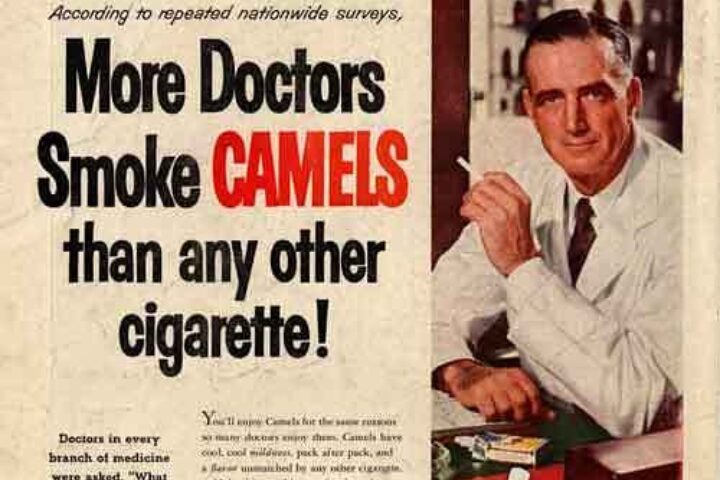
If you saw a doctor in a cigarette ad back then, it was because they were actually promoting smoking. Brands like Camels ran campaigns stating “More doctors smoke Camels than any other cigarette,” complete with glossy pictures of physicians puffing away. These doctors often appeared in medical journals or on prime-time television, lending an aura of trust and legitimacy to the product. It wasn’t just Camel, L&M and Viceroy also ran similar “Just what the doctor ordered” ads, implying their filtered smokes had health benefits. The plan worked too; surveys and loaded promotions helped reassure people that smoking was safe, or even beneficial. Public health experts now look back and shake their heads.
3. Pregnant Woman Smoked, Too
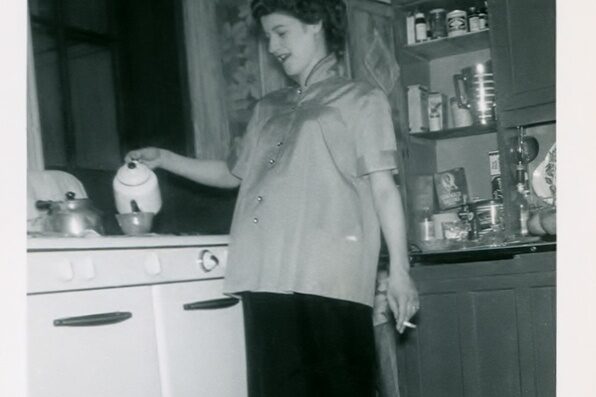
In the era of full skirts and mock curves, slenderness was a feminine ideal. This was so much that pregnant women were sometimes encouraged to skip meals and even puff cigarettes to stay thin. Advertisers pushed the idea that smoking helped control weight and curb appetite, making it seem like a harmless shortcut to chic.
Again, doctors and ads reinforced this, even as research was already linking smoking to health risks. The combination of flimsy prenatal guidance and cultural pressure meant many women followed harmful advice without questioning it. Today, the idea of a doctor telling an expectant mother to smoke seems shocking, but it highlights how gender roles and medical advice once intersected to harmful effect.
4. Spanking & School Discipline Was Allowed
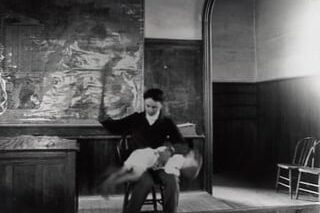
In classrooms across America, corporal punishment was routine. Teachers carried paddles or straps, and discipline was enforced with a strike or two, or more, right in front of everyone. It was woven into the idea of respect and obedience, with little thought given to psychological impacts or the child’s dignity. If a kid acted up, the typical response was to remove them from class and administer a public spanking. Parents often supported it, thinking it built character or curbed misbehavior. Today, behaviorist studies and child advocacy have reframed it as harmful and outdated and most schools ban corporal punishment outright. It’s a clear sign of how societal norms around authority and childhood have evolved.
5. Cars Had No Seatbelts or Car Seats

In the 1950s, kids traveled in cars without seatbelts or proper car seats. Children often sat unrestrained, sometimes leaning between front seats or playing in the back, all without any safety harness. Early car seats, which were more like booster stools, weren’t designed to protect in crashes. Instead, they helped keep children in view of parents while driving. Regulation for child car seats didn’t begin until 1971, and seatbelt use only became standard much later. In the ’50s, even after initial safety belts appeared in some cars, many people feared they might be dangerous. The saying that “seatbelts will trap you” was a real concern voiced by skeptics at the time.
6. Ads Objectified Teens
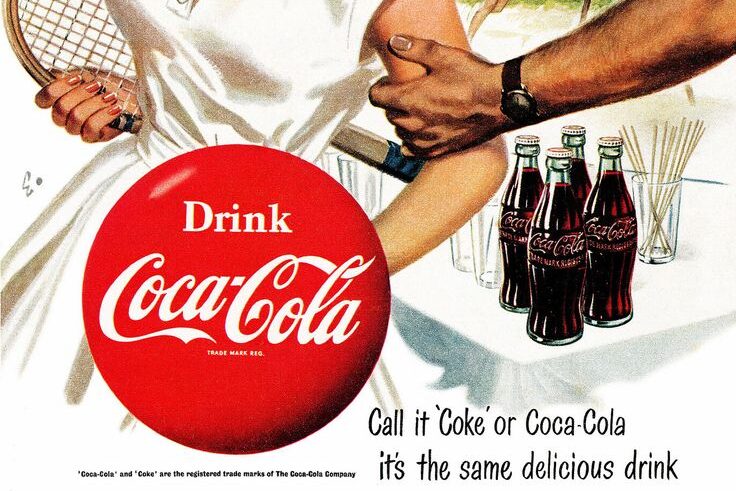
Advertising in the 1950s blatantly sexualized teenage girls to sell everything from soda to cars. Magazine spreads and billboards routinely featured young women in suggestive poses, using their youthful appeal as sales hooks. It wasn’t just clothing; products like cigarettes, lingerie, and even household items were marketed through flirtation and innuendo aimed at adolescents. These ads reinforced harmful beauty ideals while normalizing the exploitation of teen bodies to push products. This laid the groundwork for today’s critical conversations about media, consent, and the portrayal of minors.
7. Husband Controlled Finances

Married women in the ’50s often didn’t have legal control over their own earnings or property. Though Married Women’s Property Acts began in the mid-1800s, the legal doctrine of “coverture” still left many women without real autonomy. In practice, husbands typically controlled all finances from bank accounts, assets, to credit, leaving wives financially dependent and unable to make major decisions alone. This wasn’t just custom; it was legal in many states until the mid‑20th century. Even by the ’50s, wives required their husband’s permission to sign contracts, manage inheritance, or even retain earnings. It’s shocking now to think a married woman couldn’t open a bank account or keep her paycheck without her husband’s say-so.
8. Segregation Was Still Legal
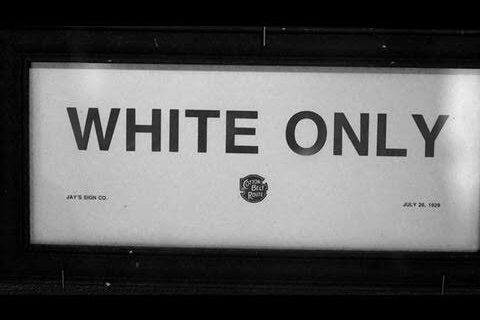
Through the 1950s, Jim Crow laws mandated “separate but equal” in public spaces like schools, restaurants, buses, restrooms, and more, especially in the South, though de facto segregation existed in the North too. Families living in the North might have seen signs like “White Only” without thinking twice, because that was just the law. While the landmark Brown v. Board of Education decision came in 1954, its promise took years to fulfill. Many places resisted school integration, and other public services remained segregated well into the 1960s. That reality highlighted how widespread and normalized racial inequality was, even as people argued it was the standard.
9. Gay People Were Labeled Mentally Ill
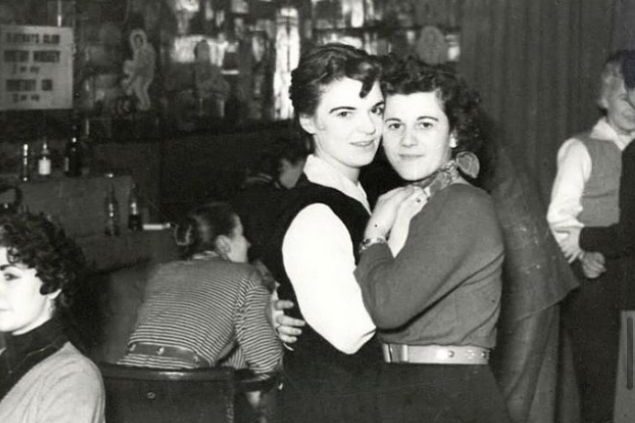
In the 1950s, mainstream psychology officially considered homosexuality a mental disorder. The first DSM in 1952 placed “homosexuality” under “sociopathic personality disturbance,” and even by the late ’60s, revisions still labeled it a “sexual deviation”. This wasn’t just academic: the government also persecuted LGBTQ+ individuals during the “Lavender Scare,” viewing them as security threats and removing them from federal jobs. Psychiatric “treatments” ranged from commitment to aversion therapy, with wide-reaching impact. It wasn’t until the APA removed homosexuality from the DSM in 1973 that this harmful labeling began to change.
10. Women Forced to Quit Work After Marriage
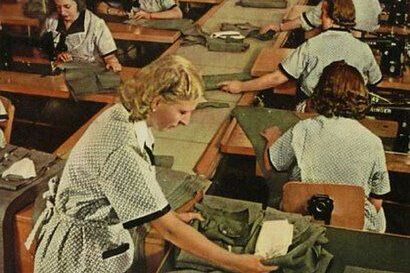
It was common for married women to leave their jobs in the 1950s. Many companies enforced a “marriage bar,” requiring women to resign or preventing employers from hiring married women altogether. The idea was that once married, a woman’s place was in the home, not the workplace. While more women gained access to education and jobs like teaching and nursing, those paths were short-lived. They were expected to leave as soon as they married. It wasn’t until anti-discrimination laws in the 1960s and ’70s that this systemic bias began to disappear.
11. Kids Roamed Freely, All Day Long (That Went on into the ’70s)
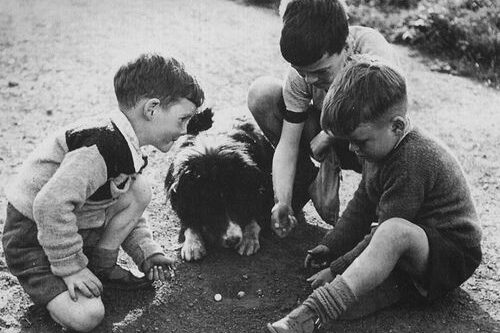
During the ’50s, children were often left to roam the neighborhood from morning till dusk, with little adult supervision. Groups of kids played outside, walking to school or exploring nearby streets well into the evening. Parents trusted their children to manage on their own in ways most modern parents find unthinkable today. This freedom came from a mix of safer neighborhoods, fewer cars, and a belief that independence built character. But it also meant kids faced risks we’d now try to minimize like strangers with harmful intentions, traffic, and accidents. Still, it reminds us how much directions, check-ins, and supervision have come to define parenting now.
12. Dads Were Absent in Delivery Rooms
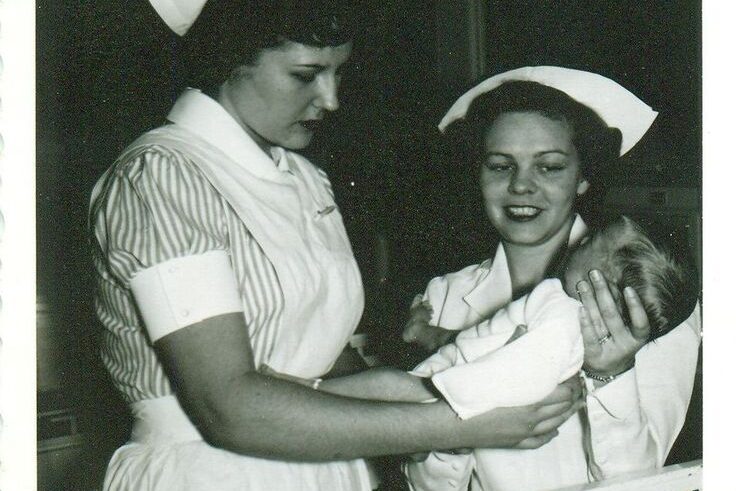
In the 1950s, it was rare for fathers to be present for childbirth. Delivery rooms were often reserved solely for doctors, nurses, and the mother, no partners, no family. This was because childbirth was seen as a medical event for women, not a shared, family experience. That began shifting in the ’60s and ’70s as paternal involvement in childbirth grew. Today, we expect dads to be part of the experience, just as much a supportive presence as any medical professional. It’s a small change but one that highlights how our understanding of family and shared moments has evolved.
13. Teachers Humiliated Students
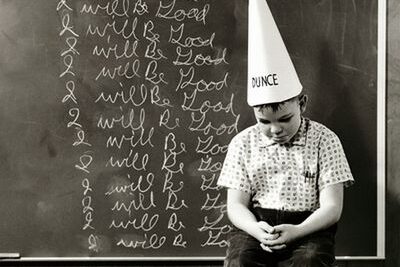
In the 1950s, some teachers used public shaming as a classroom tool by making students wear dunce caps, stand on stools, write lines by hand, or even placing their noses in “nose rings” fixed to a blackboard. These methods aimed to enforce discipline, but often left lasting emotional scars and feelings of embarrassment. It wasn’t uncommon for a child to be strapped with a ruler or paddle in front of their peers, fueling fear more than respect. Such tactics flew under the radar because there was little awareness of their psychological impact. But over time, educators and psychologists recognized the harm in humiliation while studies and personal accounts revealed that shaming often backfired, causing anxiety, resentment, or even rebellion. Today, using public humiliation is considered unacceptable and counterproductive.
14. There Was Lead Paint & Asbestos in Buildings
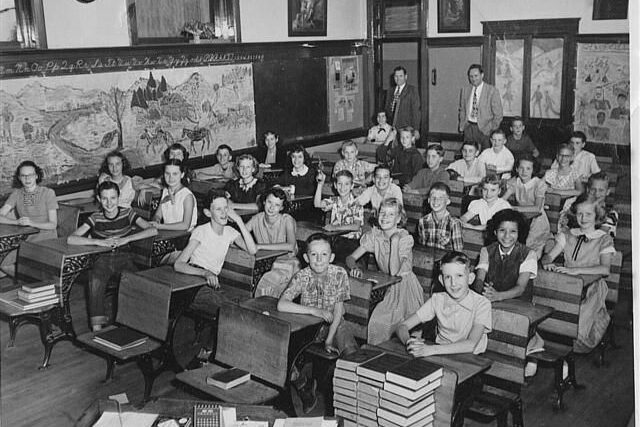
Homes and schools built in the 1950s often contained lead-based paint and asbestos materials used for their durability, insulation, and fire resistance. Many school buildings had asbestos-laden ceiling tiles, insulation, or pipe coverings, and classrooms could be painted with lead pigment which may be harmless-looking at first glance. But by the 1970s and 1980s, mounting evidence showed these materials cause serious health issues: lead exposure led to neurological damage in children, while asbestos inhalation causes diseases like mesothelioma, asbestosis, and lung cancer. Today, these substances are regulated or banned, and guidelines require safe removal from older structures.
15. Mental Illness Was Hidden
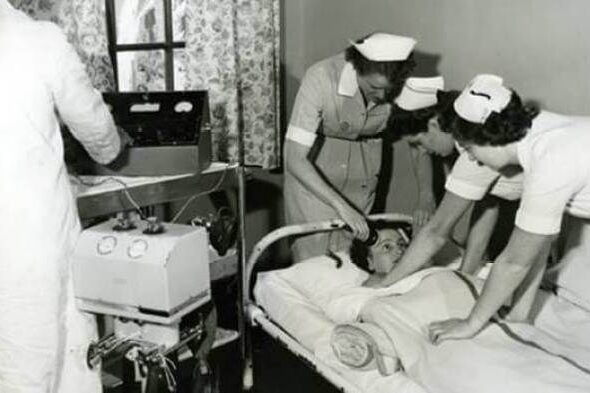
Mental illness in the 1950s carried a heavy stigma, often pushed behind closed doors and misdiagnosed as moral or spiritual failings. Families hid loved ones away and committed to institutional care or angling professional “cures” to avoid shame and social exclusion. Emotional support and open discussions were rare, and medication often meant sedation, not therapy or understanding. This silence meant many suffered in isolation, unaware of mental health as a genuine and treatable condition. Thankfully, decades of activism, research, and treatment advancements have changed the narrative. Now, we emphasize awareness, therapy, community care, and seeing mental health as central to overall well-being.
16. We Had Blind Trust in Ads
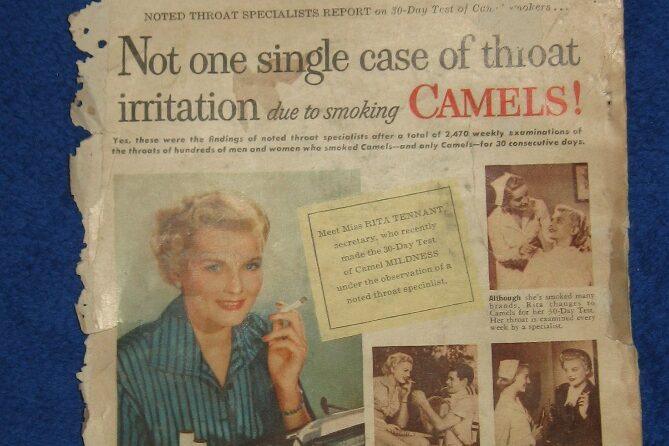
In the ’50s, TV commercials and print ads were trusted almost without question. Families believed in the sincerity of announcers and that doctors or experts represented products truthfully. This trust made advertisements powerful, especially since visual messaging was still fresh and impactful. There were no mandatory truth-in-advertising laws, so many claims were exaggerated or misleading: toothpaste promised to whiten teeth overnight; vitamins offered guaranteed energy boosts; household cleaners boasted miracle germ-killing powers. As a result, a more skeptical consumer culture emerged in later years, driven by regulation and awareness campaigns that demanded evidence-backed claims.
17. Girls Were Banned from Wearing Pants
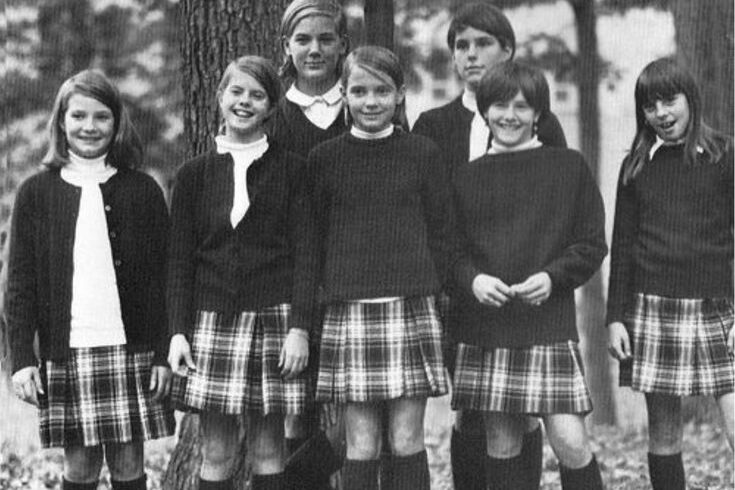
In many 1950s schools, girls were forbidden from wearing trousers, although gym class might allow culottes, but everyday wear meant skirts and dresses only. Dress codes enforced distinct gender norms and placed importance on “ladylike” presentation, limiting girls’ practical freedom or comfort for school work or play. Breaking this rule could result in being sent home or publicly reprimanded, even as boys moved freely in shorts or trousers. With the rise of feminist movements and changing fashion norms in the 1960s, dress codes began liberalizing. Today, most schools allow girls to wear pants freely, an example of how small daily norms reflect larger shifts in gender equity.
Society’s progress often shows up in these small, everyday rules that once felt normal. As we look back, it invites us to stay aware of today’s norms that might seem just as strange in another 70 years.
This story 17 Retro Norms from the 1950s That Would Raise Eyebrows Today was first published on Daily FETCH


